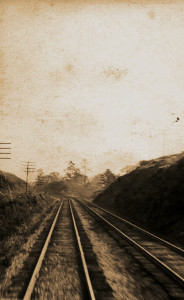 One-time Austinite Steven Saylor tells the story of the Servant Girl Murders through the eyes of one-time Austinite O. Henry in the novel A Twist At The End.
One-time Austinite Steven Saylor tells the story of the Servant Girl Murders through the eyes of one-time Austinite O. Henry in the novel A Twist At The End.
You think you know people, but you don’t. A Twist at The End is an old-fashioned mystery novel of people not being who they seem, thwarted expectations and unexpected resolutions.
The novel begins in 1906 in New York, with O. Henry spending his last remaining years writing, drinking too much, struggling with deadlines and hoping to get paid. There are a couple of shadows in O. Henry’s life – one in the form a blackmailing femme fatale; the other, a mysterious stranger haunting his favorite bar. Not unexpectedly both of these shadows are cast from his previous life in Austin, Texas, where he was then known as Will Porter. To come out from their shadows, O. Henry must take a journey into his past and settle some old accounts.
The mysterious stranger turns out to be a certain Doctor Kringel, who has delivered unexpected news from an old acquaintance in Austin – that he has solved the mystery of the 1885 murders, but he will only reveal the details to O.Henry in person. Intrigued, O. Henry agrees to accompany Kringel on a train journey to Austin and during trip he recalls his life, loves and misfortunes as a young man in Texas.
Originally from North Carolina, William Porter moved to Texas in 1882 and settled in Austin in 1884. In 1885 the 23-year-old Porter worked as a shop clerk and in his spare time sang in a men’s chorus group.
In the novel, during one of the group’s performances serenading a group of young women, Porter is smitten by the sight of a beautiful girl in attendance. It is love at first sight, but she is a mystery, he has no idea who she is or how to find her. Eventually he discovers her name, Eula, but she remains elusive until he meets her sister-in-law Delia, who begrudgingly parcels out details about her. Eventually Porter finds out more than he bargained for – that Eula is married and has a child – but he is not dissuaded from pursuing her and his efforts to woo her become increasingly careless.
(The relationship between Will Porter and Eula is fictional – they might have known each other, it was certainly within the realm of possibility, but there is no historical evidence that they did.)
As Will recklessly pursues Eula, something diabolical is lurking in the background – women being mysteriously murdered in the dead of night.
The murders themselves are in the narrative background of the novel — it’s more a complex of mysteries rather than a bloody crime thriller or horror story. Will Porter isn’t directly involved with the murders, nor seemingly are any of the other main characters apart from Will’s friend Dave Shoemaker, a crime reporter whose stories about the murders horrify and alarm the local daily newspaper readers.
The novel is virtually non-fiction regarding the details of the crimes. Saylor does not deviate from the historical accounts of the murders and he is meticulous in his descriptions of the local establishments, people, places and scenery of Austin as it existed in the 1880s.
A number of real historical persons play important parts in the novel including Marshal Grooms Lee as a stereotypical stubborn lawman and bully; William Gaines as a stereotypical gruff newspaper editor; Elisibet Ney as an eccentric sculptress; William H. Holland as an African-American teacher, community leader and voice of reason; just to name a few.
There were many wonderful narrative ornaments in the story, such as the ghost dog at Shoal Creek (I think I’ve come across that dog myself) and a lot of little history lessons that give the reader a sense of the social mores and idiosyncrasies of the times. I especially enjoyed the last sections of the novel, the aftermath of the murders and the conclusion where Saylor frees the story from historical constraints and gives it a big finish on top of Mount Bonnell.
Saylor has genuine affection for the characters and I enjoyed seeing them imagined in ways that got them unstuck from their historical fates (to some extent) and brought to life and afforded a literary memorial of sorts.
JRG